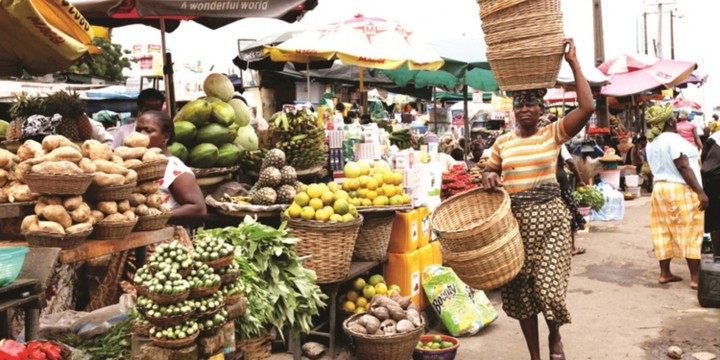Even As Naira Gains Strength, Locally-produced Foods Now More Expensive Than Imported Ones
In a curious twist of economic fate, Lagos’s bustling food markets are witnessing a dramatic shift in pricing trends. A comprehensive survey by Nairametrics, spanning from March 12th to April 11th, has revealed a significant drop in the prices of foreign-produced foods and those made with imported raw materials. Conversely, the cost of locally sourced staples is on an upward trajectory.
Foreign Fare Becomes More Affordable
At Igando Market, a bag of imported rice that commanded a price tag of N88,000 just two weeks prior is now available for N78,000. A similar trend is observed at Iyana Ipaja Market, where the price plummeted from N90,000 to N79,000. Supermarkets are also partaking in this price descent, with items like canned beans and stringed beans flour marking noticeable reductions.
Local Produce Prices Climb
On the flip side, a paint bucket of garri, previously sold for N2,500 at Igando Market, has escalated to N3,400. Yam, a staple in Nigerian diets, has also seen a price hike from N2,500 to N3,500 for a comparable size. Beans, another essential, have increased by N300 to N500, depending on the purchase quantity.
Insights from the Traders
Rita Ogbuebu, a wholesale rice seller, attributes the falling prices of foreign rice to the strengthening naira, which has made imports cheaper. “We are expecting the prices of rice to fall even further as the naira value increases,” she optimistically states.
Janet Ogbuefuna, a local shop owner, echoes this sentiment, noting a significant drop in the price of Indomie noodles. A manager from a prominent noodles plant corroborates, citing the decrease in costs for foreign inputs as the reason behind the price reduction.
The Root of Rising Local Food Costs
Sola Akhomolafe, an agronomist, points to increasing insecurity and high transportation costs as culprits for the rising prices of local foodstuff. He also highlights the acute lack of storage facilities, leading to a staggering 60% post-harvest loss.
Dr. Muda Yusuf, CEO of the Center for the Promotion of Private Enterprise (PPE), adds that seasonality plays a role, with most of Nigeria’s agricultural production being rain-dependent. “We are in the planting season right now. Usually, the prices of food products fall during harvest season,” he explains, emphasizing the lack of adequate storage facilities in Nigeria.
A wholesale yams dealer known as Alhaji cites the high cost of transportation as the primary factor driving up the prices of locally-produced food.
A Balancing Act
This pricing phenomenon presents a complex picture of Nigeria’s food economy, where global market dynamics and local challenges intertwine, leading to a seesaw effect on the cost of sustenance. As the nation grapples with these economic fluctuations, the eyes of consumers and policymakers alike remain fixed on the scales of market forces.



